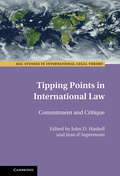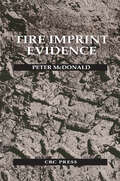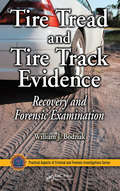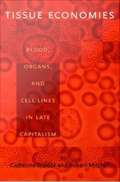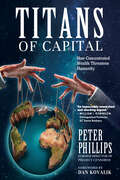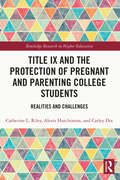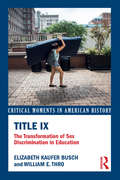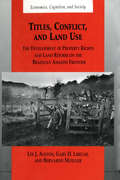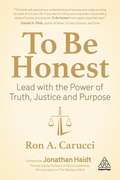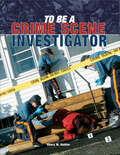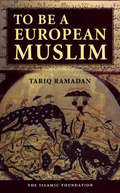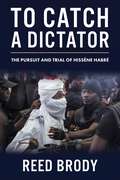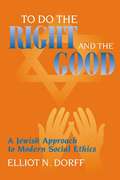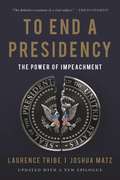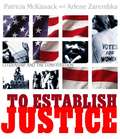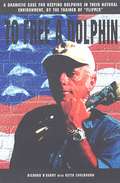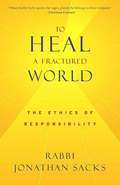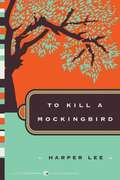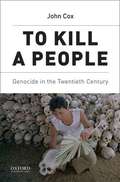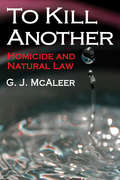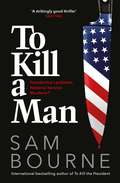- Table View
- List View
Tiny But Mighty: Kitten Lady's Guide to Saving the Most Vulnerable Felines
by Hannah Shaw*A New York Times Bestseller* #1 National BestsellerIndie BestsellerFrom Kitten Lady, the professional kitten rescuer, humane educator, animal advocate, and owner of the popular Instagram @kittenxlady comes the definitive book on saving the most vulnerable—and adorable—feline population: newborn kittens.Hannah Shaw, better known as Kitten Lady, has dedicated her life to saving the tiniest felines, but one doesn't have to be a professional kitten rescuer to change—and save—lives. In Tiny but Mighty, Hannah not only outlines the dangers newborn kittens face and how she combats them, but how you can help every step of the way, from fighting feline overpopulation on the streets to fostering unweaned kittens, from combating illness to combating compassion fatigue, from finding a vet to finding the purrfect forever home. Filled with information on animal welfare, instructional guides, and personal rescue stories of kittens like Chloe, Tidbit, Hank, and Badger—not to mention hundreds of adorable kitten photos—Tiny but Mighty is the must-have kitten book for cat lovers, current-and-future rescuers, foster parents, activists, and advocates.
Tipping Points in International Law: Commitment and Critique (ASIL Studies in International Legal Theory)
by John D. Haskell Jean D’AspremontAddressing some of the most perilous, controversial issues in international law and governance, this volume brings together legal scholars from diverse geographic, personal and scholarly perspectives. They reflect on the pervasive feeling of crisis in the world today and share their views on the possibilities and limits of the international legal architecture and its expert communities in shaping the world of tomorrow. What exactly is this feeling that the contemporary international legal architecture is at a tipping point? What do these possible risks expose about the fragility and limits of our current conceptual and institutional order? What commitments drive our hopes and anxieties? Authors explore these questions across a wide range of possible tipping points and offer readers a unique snapshot of the lived experience of what it means to be an expert engaged right now in international law and governance. Each chapter covers both theory and practice in analysing a current problem.
Tire Imprint Evidence (Practical Aspects of Criminal and Forensic Investigations)
by Peter McDonaldImprove your use of tire imprint evidence with the work of an expert. McDonald discusses methods for examining, capturing, and recording imprints, outlines standard procedures for identification, shows how to prepare expert testimony, and provides detailed technical information helpful in identifying imprints.
Tire Tread and Tire Track Evidence: Recovery and Forensic Examination (ISSN)
by William J. BodziakAlong with firearms, tool marks, fingerprints, and footwear, the analysis of tire marks is a key area within the forensic discipline of impression evidence. Tire Tread and Tire Track Evidence presents practical methods for recovering, examining, and interpreting this evidence within the context of actual case studies. Including basic information and terminology regarding tires, this book offers advice about the use of photographing and casting in order to recover tire evidence for examination and the proper way to examine and evaluate this evidence. Providing additional resources for further study, this text is filled with photographs to illustrate every aspect of this evidence.
Tired of Winning: Donald Trump and the End of the Grand Old Party
by Jonathan KarlTHE INSTANT NEW YORK TIMES BESTSELLER "The most important thing that has been written to date about what is in front of the American people in the next presidential election." —Nicolle Wallace An extraordinary view into the politics of our times, Tired of Winning explores how Donald Trump remade the Republican Party in his own image—and the wreckage he&’s left in his wake. Packed with new reporting, Tired of Winning: Donald Trump and the End of the Grand Old Party tracks Trump&’s improbable journey from disgraced and defeated former president to the dominant force, yet again, in the Republican Party. From his exile in Mar-a-Lago, Donald Trump has become more extreme, vengeful, and divorced from reality than he was on January 6, 2021. His meddling damaged the GOP&’s electoral prospects for third consecutive election in 2022. His legal troubles are mounting. Yet he re-emerged as the frontrunner for the 2024 Republican presidential nomination. Jonathan Karl has known Donald Trump since his days as a New York Post reporter in the 1990s, and he covered every day of Trump&’s administration as ABC News&’s chief White House correspondent. No one is in a better position to detail the former president&’s quest for retribution and provide a glimpse at what the GOP would be signing up for if it once again chooses him as its standard bearer. In 1964, Ronald Reagan told Americans it was &“a time for choosing.&” Sixty years later, Republicans have their own choice to make: Are they tired of winning?
Tissue Economies: Blood, Organs, and Cell Lines in Late Capitalism
by Robert Mitchell Catherine WaldbyAs new medical technologies are developed, more and more human tissues--such as skin, bones, heart valves, embryos, and stem cell lines--are stored and distributed for therapeutic and research purposes. The accelerating circulation of human tissue fragments raises profound social and ethical concerns related to who donates or sells bodily tissue, who receives it, and who profits--or does not--from the transaction. Catherine Waldby and Robert Mitchell survey the rapidly expanding economies of exchange in human tissue, explaining the complex questions raised and suggesting likely developments. Comparing contemporary tissue economies in the United Kingdom and United States, they explore and complicate the distinction that has dominated practice and policy for several decades: the distinction between tissue as a gift to be exchanged in a transaction separate from the commercial market and tissue as a commodity to be traded for profit. Waldby and Mitchell pull together a prodigious amount of research--involving policy reports and scientific papers, operating manuals, legal decisions, interviews, journalism, and Congressional testimony--to offer a series of case studies based on particular forms of tissue exchange. They examine the effect of threats of contamination--from HIV and other pathogens--on blood banks' understandings of the gift/commodity relationship; the growth of autologous economies, in which individuals bank their tissues for their own use; the creation of the United Kingdom's Stem Cell bank, which facilitates the donation of embryos for stem cell development; and the legal and financial repercussions of designating some tissues "hospital waste. " They also consider the impact of different models of biotechnology patents on tissue economies and the relationship between experimental therapies to regenerate damaged or degenerated tissues and calls for a legal, for-profit market in organs. Ultimately, Waldby and Mitchell conclude that scientific technologies, the globalization of tissue exchange, and recent anthropological, sociological, and legal thinking have blurred any strict line separating donations from the incursion of market values into tissue economies.
Titans of Capital: How Concentrated Wealth Threatens Humanity
by Peter PhillipsA fascinating examination of the rapid concentration of global capital, with chapters that focus on China and Russia.Explores how fewer and larger investment companies now manage the excess financial wealth of the world&’s 40 million richest people, to the detriment of everyone else and the global environment.In Titans of Capital, Peter Phillips, a political sociologist, poses three key research questions: To what extent do the wealthy influence—or even dominate—decision making that affects all of us in society? Who are the most powerful people? And how does the accumulation of capital work?Networks of wealthy individuals have evolved since the COVID-19 pandemic, and Titans of Capital shows how the financial investments of transnational elites threaten human rights and the future of the planet.Private capital investments serve as the primary operating funds for international arms sales, private prisons, and other socially negative activities. These investments fuel the continued use of carbon-based energy leading to amplified global warming and climate change.Military spending is a critical component of continued wealth concentration and political power in the world. Spending on arms and intelligence is a required aspect of maintaining global power and control. Dealing with Russia, China, Iran and other &“rogue&” states is a continuing agenda for agents of the world power elites.Propaganda machines in Western capitalist governments serve to protect elite wealth by promoting military conflicts to open new regions for economic investment.Phillips warns that while continued concentration of global capital increases the profits enjoyed by the global economy&’s &“Titans,&”, it also increases global inequality, starvation, and civil unrest, threatening the lives of the hundreds of millions of people living in extreme poverty. It is imperative to ask how we can reverse the concentration of Titan wealth and revitalize grassroots democracy unbridled by extreme wealth. Identifying 117 global Titans by name and exposing the networks and interests that unite them provides readers opposed to militarism and committed to economic equality with crucial tools to directly engage the power elite who endanger life on earth.
Title IX and the Protection of Pregnant and Parenting College Students: Realities and Challenges (Routledge Research in Higher Education)
by Catherine L. Riley Alexis Hutchinson Carley DixThis book explores the discrepancies among what protections Title IX provides to pregnant and parenting students, what colleges communicate, and what pregnant and parenting students actually experience. To actually protect pregnant and parenting students, the authors argue that a school must provide multifaceted support that is effectively communicated to an entire campus community, including students who are parenting, who are pregnant, and who may become pregnant. The first part of the book portrays the realities of pregnancy and parenting in college. The chapters illuminate related Title IX applications, population demographics, how unplanned pregnancies in college occur, and physical and mental health challenges that these students often experience. The authors then discuss what compliance with Title IX legally entails and why meeting it is often an afterthought. In the second half of the book, the authors use mixed-methods research to map the compliance landscapes of three schools in the southeast as examples: a large state school, a mid-size private university, and a small private college. Offering eye-opening interviews with pregnant and parenting students, interdisciplinary research, and proposals for multifaceted support and communication on college campuses, this volume will engage students, scholars, and activists with an interest in higher education administration, educational policy, reproductive health, bioethics, gender studies, and rhetoric.
Title IX: The Transformation of Sex Discrimination in Education (Critical Moments in American History)
by Elizabeth Kaufer Busch William E. ThroThis book examines the history and evolution of Title IX, a landmark 1972 law prohibiting sex discrimination at educational institutions receiving federal funding. Elizabeth Kaufer Busch and William Thro illuminate the ways in which the interpretation and implementation of Title IX have been transformed over time to extend far beyond the law's relatively narrow statutory text. The analysis considers the impact of Title IX on athletics, sexual harassment, sexual assault, and, for a time, transgender discrimination. Combining legal and cultural perspectives and supported by primary documents, Title IX: The Transformation of Sex Discrimination in Education offers a balanced and insightful narrative of interest to anyone studying the history of sex discrimination, educational policy, and the law in the contemporary United States.
Titles, Conflict, and Land Use: The Development of Property Rights and Land Reform on the Brazilian Amazon Frontier
by Lee J. AlstonThe Amazon, the world's largest rain forest, is the last frontier in Brazil. The settlement of large and small farmers, squatters, miners, and loggers in this frontier during the past thirty years has given rise to violent conflicts over land as well as environmental duress. Titles, Conflict, and Land Use examines the institutional development involved in the process of land use and ownership in the Amazon and shows how this phenomenon affects the behavior of the economic actors. It explores the way in which the absence of well-defined property rights in the Amazon has led to both economic and social problems, including lost investment opportunities, high costs in protecting claims, and violence. The relationship between land reform and violence is given special attention. The book offers an important application of the New Institutional Economics by examining a rare instance where institutional change can be empirically observed. This allows the authors to study property rights as they emerge and evolve and to analyze the effects of Amazon development on the economy. In doing so they illustrate well the point that often the evolution of economic institutions will not lead to efficient outcomes. This book will be important not only to economists but also to Latin Americanists, political scientists, anthropologists, and scholars in disciplines concerned with the environment.
To Be Honest: Lead with the Power of Truth, Justice and Purpose
by Ron A. CarucciUnder what conditions will people tell the truth, behave fairly and act with purpose at work? And when will they lie, cheat and be selfish?Based on 15 years of research, To Be Honest explains how four factors (Clear Identity, Accountability, Governance and Cross-Functional Relationships) affect honesty, justice and purpose within a company. When these factors are absent or ineffective, the organizational conditions compel employees to choose dishonesty and self-interest. But when done well, the organization is 16 times more likely to have people tell the truth, behave fairly and serve a greater good.To Be Honest shares the stories of leaders who have acted with purpose, honesty and justice even when it was difficult to do so. In-depth interviews with CEOs and senior executives from exemplar companies such as Patagonia, Cabot Creamery, Microsoft and others reveal what it takes to build purpose-driven companies of honesty and justice. Interviews with thought leaders like Jonathan Haidt, Amy Edmondson, Dan Ariely and James Detert offer rich insights on how leaders can become more honest and purposeful. You'll learn how Hubert Joly took Best Buy from a company on the brink of bankruptcy to one that is profitable, thriving and purposeful. Filled with real-life examples, To Be Honest offers actionable steps, practical tools and approaches that any leader or manager can use to create a culture of purpose, honesty and justice.
To Be a Crime Scene Investigator (To Be A Ser.)
by Henry M. HoldenAn in-depth introduction to the life, careers, and methodologies of crime scene investigators.If the devil is in the details, then the crime scene investigator’s got him: conducting searches, collecting information, photographing, scrutinizing, analyzing—pursuing the culprit right down to the last scrap of evidence. Whether you’d like to become a crime scene investigator or simply want to see what it takes, this book is your ideal introduction to this fascinating aspect of crime detection.Like a top-notch forensics expert, author Henry M. Holden traces the path that crime scene investigators follow as they learn and ply their trade. His behind-the-scenes look takes us from application to training, crime scene to lab, revealing the fine points of securing, examining, and processing evidence; identifying victims, and reenacting the crime; conducting police lineups and interviews, and administering polygraphs; and forensics and evidence analysis.
To Be a European Muslim
by Tariq RamadanThis book addresses some of the fundamental issues borne of the several million strong Muslim presence in Europe in our times. Based on a thorough study of Islamic sources, it seeks to answer basic questions about a European Muslim's social, political, cultural and legal life as a practising Muslim while living together in multi-faith, pluralistic European nation states.
To Be a U.S. Secret Service Agent
by Henry M. HoldenA look inside the renowned law enforcement agency—its history, its recruiting and training process, and tips for those seeking a Secret Service career.The Secret Service was established after the Civil War by the Treasury Department, originally to protect American currency against counterfeiters. It was only after the assassination of President William McKinley in 1901 that Congress directed the Secret Service to protect the President of the United States. Today, protection remains the primary mission of the United States Secret Service.It takes a special type of individual to be a U.S. Secret Service agent, one willing to “take a bullet” to preserve the ideals on which the United States was founded. To Be a U.S. Secret Service Agent lifts the curtain for a look inside this law enforcement agency, including the highly selective recruiting, the intense training, and the specialized weapons and equipment used to protect current and past presidents, vice presidents, their families, and visiting heads of state.Includes photos
To Catch a Dictator: The Pursuit and Trial of Hissène Habré
by Reed BrodyWhat does it take to make a dictator answer for his crimes? Hissène Habré, the former despot of Chad, had terrorized, tortured, and killed on a horrific scale over eight bloody years in power—all while enjoying full American and Western support. After Habré’s overthrow, his victims and their supporters were determined to see him held responsible for his atrocities. Their quest for justice would be long, tense, and unnerving, but they would not back down.To Catch a Dictator is a dramatic insider’s account of the hunt for Habré and his momentous trial. The human rights lawyer Reed Brody recounts how he and an international team of investigators, legal experts, and victims worked across three continents to unearth evidence and witnesses, petition courts and skeptical governments, and rally public opinion. They faced many obstacles and constant threats. One of Brody’s Chadian colleagues was gravely injured in a bomb attack, and another had to seek asylum in the United States. Habré fought back bitterly, drawing on secret bank accounts and extensive political connections to preserve his life of luxurious exile. Yet Brody and his allies ultimately triumphed: Habré became the first former head of state to be convicted of crimes against humanity in the courts of another country. This fast-paced, suspenseful book shows that there is nothing inevitable about the impunity that too often protects the powerful and that even the worst tyrants can be brought to justice.The book also features a foreword by Jacqueline Moudeïna, the lead lawyer for Hissène Habré’s victims, who received the Right Livelihood Award (the “alternative Nobel Peace Prize”) in 2011.
To Do the Right and the Good: A Jewish Approach to Modern Social Ethics
by Elliot N. DorffFrom the preface: One glance at the contents of this book amply explains why anyone would be interested in its topics: Communal relations, interfaith relations, national policy, procedural justice, poverty, war, and forgiveness among individuals and communities are issues that have deeply affected human life from its very inception. The modern world's instant communication over any distance; its internationally interwoven economy; its capabilities of mass destruction; and its simultaneous potential for true global learning, understanding, and enrichment make these age- old issues all the more compelling. Some of the old answers seem to do just fine in our modern world, whereas others seem to be woefully inadequate. In some cases, we are not even sure how to apply ancient wisdom to the new circumstances in which we find ourselves. New explorations of these issues, then, are clearly in order.
To End a Presidency: The Power of Impeachment
by Laurence Tribe Joshua Matz<P>The history and future of our democracy's ultimate sanction, presidential impeachment, and a guide to how it should be used now <P> To End a Presidency addresses one of today's most urgent questions: when and whether to impeach a president. <P>Laurence Tribe and Joshua Matz provide an authoritative guide to impeachment's past and a bold argument about its proper role today. In an era of expansive presidential power and intense partisanship, we must rethink impeachment for the twenty-first century. <P>Of impeachments, one Constitutional Convention delegate declared, "A good magistrate will not fear them. A bad one will be kept in fear of them." <P>To End a Presidency is an essential book for all Americans seeking to understand how this crucial but fearsome power should be exercised.
To Establish Justice: Citizenship and the Constitution
by Patricia McKissack Arlene ZarembkaThe U.S. Constitution is the world's oldest written constitution. It has lasted so long because of its flexibility and because of the checks and balances provided by its writers, called the framers.
To Fix or To Heal: Patient Care, Public Health, and the Limits of Biomedicine (Biopolitics #3)
by Joseph E. Davis Ana Marta GonzálezDo doctors fix patients? Or do they heal them? For all of modern medicine’s many successes, discontent with the quality of patient care has combined with a host of new developments, from aging populations to the resurgence of infectious diseases, which challenge medicine’s overreliance on narrowly mechanistic and technical methods of explanation and intervention, or “fixing’ patients. The need for a better balance, for more humane “healing” rationales and practices that attend to the social and environmental aspects of health and illness and the experiencing person, is more urgent than ever. Yet, in public health and bioethics, the fields best positioned to offer countervailing values and orientations, the dominant approaches largely extend and reinforce the reductionism and individualism of biomedicine.The collected essays in To Fix or To Heal do more than document the persistence of reductionist approaches and the attendant extension of medicalization to more and more aspects of our lives. The contributors also shed valuable light on why reductionism has persisted and why more holistic models, incorporating social and environmental factors, have gained so little traction. The contributors examine the moral appeal of reductionism, the larger rationalist dream of technological mastery, the growing valuation of health, and the enshrining of individual responsibility as the seemingly non-coercive means of intervention and control. This paradigm-challenging volume advances new lines of criticism of our dominant medical regime, even while proposing ways of bringing medical practice, bioethics, and public health more closely into line with their original goals. Precisely because of the centrality of the biomedical approach to our society, the contributors argue, challenging the reductionist model and its ever-widening effects is perhaps the best way to press for a much-needed renewal of our ethical and political discourse.
To Free a Dolphin
by Keith Coulbourn Richard O'BarryIn this memorable first book, Behind the Dolphin Smile, Richard O'Barry told the inspiring story of his personal transformation from world-famous dolphin trainer (Flipper was his pupil) to dolphin liberator. Now, in To Free a Dolphin, he passionately recounts the dramatic story of his heart-breaking campaign to release captive dolphins back into the wild. With wit and insight he chronicles the extreme opposition he has faced from bureaucrats, major players in the captive-dolphin industry, rival wildlife groups, and well-meaning sentimentalists. He introduces readers to famous show animals he has helped, including Bogie and Bacall of Key Largo. And, most fascinating, he describes his struggles to deprogram and rehabilitate dolphins emotionally scarred from years of captivity--struggles that become battles for the animals' souls.
To Heal a Fractured World: The Ethics of Responsibility
by Jonathan SacksOne of the most respected religious thinkers of our time makes an impassioned plea for the return of religion to its true purpose--as a partnership with God in the work of ethical and moral living.What are our duties to others, to society, and to humanity? How do we live a meaningful life in an age of global uncertainty and instability? In To Heal a Fractured World, Rabbi Jonathan Sacks offers answers to these questions by looking at the ethics of responsibility. In his signature plainspoken, accessible style, Rabbi Sacks shares with us traditional interpretations of the Bible, Jewish law, and theology, as well as the works of philosophers and ethicists from other cultures, to examine what constitutes morality and moral behavior. "We are here to make a difference," he writes, "a day at a time, an act at a time, for as long as it takes to make the world a place of justice and compassion." He argues that in today's religious and political climate, it is more important than ever to return to the essential understanding that "it is by our deeds that we express our faith and make it real in the lives of others and the world."To Heal a Fractured World--inspirational and instructive, timely and timeless--will resonate with people of all faiths.From the Hardcover edition.
To Kill A Mockingbird
by Harper LeeHarper Lee's Pulitzer Prize-winning masterwork of honor and injustice in the deep South -- and the heroism of one man in the face of blind and violent hatred One of the best-loved stories of all time, To Kill a Mockingbird has been translated into more than forty languages, sold more than thirty million copies worldwide, served as the basis of an enormously popular motion picture, and was voted one of the best novels of the twentieth century by librarians across the country. A gripping, heart-wrenching, and wholly remarkable tale of coming-of-age in a South poisoned by virulent prejudice, it views a world of great beauty and savage inequities through the eyes of a young girl, as her father -- a crusading local lawyer -- risks everything to defend a black man unjustly accused of a terrible crime. [This text is listed as an example that meets Common Core Standards in English language arts in grades 9-10 at http://www.corestandards.org.]
To Kill A People: Genocide In The Twentieth Century
by John M. CoxThere have been numerous books on genocide in the last twenty years, but To Kill a People offers a different approach. It is one of the few books on genocide expressly written for use in the college classroom. The book includes four case studies--the Armenian, Nazi, Cambodian, and Rwandan genocides--and substantive introductory and concluding chapters that contribute to two key debates within genocide studies: how to define "genocide" and place it in relation to other mass atrocities, and how to detect and analyze the social, historical, and cultural forces that produce genocidal violence. <p><p> To Kill a People examines a vast range of the latest research, offers original interpretations and arguments, and draws upon the author's own archival research on three continents. The case studies are supplemented by primary readings and thought-provoking questions, and the book concludes with a chapter that synthesizes the lessons and issues that arise from the study of genocide. A chapter-length bibliographic essay further distinguishes this book and will be useful to students and experts alike.
To Kill Another: Homicide and Natural Law
by Graham McAleerBasing his argument on natural law, Graham J. McAleer asserts that only public authority has the right to intentionally kill. He draws upon the work of Thomas Aquinas and Francisco de Vitoria, defending the claim that these natural law theorists have developed the best available theory of homicide. To have rule of law in any meaningful sense, the author argues, there must be protections for the guilty and prohibition against killing innocents.Western theories of law have drifted steadily towards the privatization of homicide,despite the fact that it runs counter to rule of law. Public acts of homicide like capital punishment are now viewed by many as barbaric, while a private act of homicide like the starvation of comatose patients is viewed by many as a caring gesture both to patient and family. This subversion of the rule of law is prompted by humanitarian ethics.McAleer argues that humanitarianism is a false friend to those committed to the rule of law. The problem of human vulnerability makes political theology an inescapable consideration for law. Readers will find much to reflect upon in this book. McAleer's argument can be read as a cultural chapter in the history of moral ideas, but also as a close and timely reading of a grim subject.
To Kill a Man: The new blockbuster thriller from the author of TO KILL THE PRESIDENT
by Sam BourneA cat-and-mouse thriller of rare intelligence, To Kill a Man is the latest from number-one bestseller Sam Bourne -- a twisting, timely story of power, justice and revenge.A woman is brutally assaulted in her own home by an intruder. She defends herself -- leaving her attacker dead.But this is no ordinary woman. She's Natasha Winthrop, tipped as a future president of the United States.When inconsistencies emerge in Winthrop's story, political troubleshooter Maggie Costello is drafted in to save Natasha's career. At first, Winthrop is hailed as a #MeToo heroine: the woman who fought back. But Maggie is soon forced to confront more troubling questions about what really happened that night. Did Natasha secretly know her attacker? Is there a link to similar attacks, in America and around the world?Who is Natasha Winthrop -- and what is she capable of?Praise for To Kill a Man:'Ingenious plot twists and insights into political campaigning, the Me Too movement and the darker side of the internet...this [is a] topical and thought-provoking thriller' The Times'Completely gripping and original. Sam Bourne puts female anger, vengeance and power at the centre of this, his latest and to my mind most exciting novel, to thrillingly cathartic effect' Hadley Freeman'A compulsive, zeitgeisty tale of gender politics and social-media manipulation. The perfect post-#MeToo thriller -- I gobbled it up' Louise Candlish 'Chillingly convincing' Daily Mail'A thrilling and involving mystery that provides a masterclass on American politics, but also has a real human story at its heart' Sunday Express'An absorbing and timely thriller' Irish Independent

